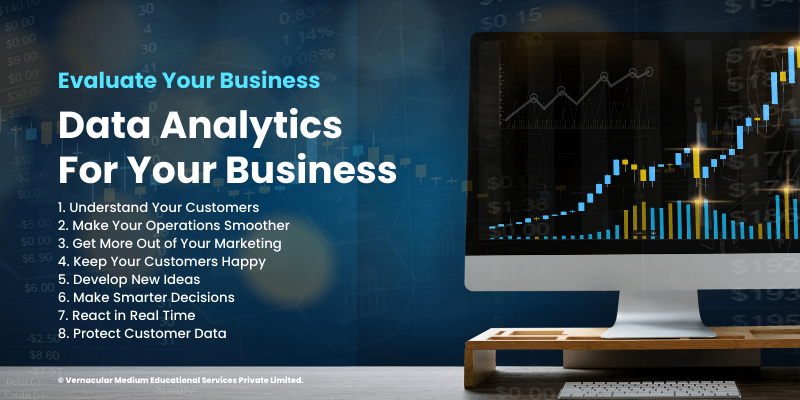In the current world, businesses, whether small or large, are utilizing data analytics to surpass their competition and advance at a faster pace. Data helps businesses make better decisions, improve their processes, and give customers more personalized experiences. Here is a simple guide on how to use data analytics for business growth:
1. Understand Your Customers:
Knowing your customers is one way to grow. Data analytics tools can help you learn about the behavior, likes, and needs of your customers. Detailed profiles of customers can be made based on website visits, social media activity, and purchase history.
For instance, an e-commerce site may analyze the browsing behavior and suggest products to a customer. Likewise, a Netflix streaming service may suggest programs based on what has been streamed already.
The more you know about your customers, the better you can serve their needs and retain them.
2. Make Your Operations Smoother:
It helps identify areas in which your business is wasting either time or money. It can also point out delays in the supply chain, items that are stocked too much, or equipment in need of maintenance.
A manufacturer can predict when a machine might break down and schedule it for repair before it happens. Delivery companies can use analytics to find faster routes, saving both time and fuel.
When your business runs efficiently, you save money and free up resources to focus on growth.
3. Get More Out of Your Marketing:
Data-driven marketing is smarter and cheaper. With click-through rates and conversions, you will know how to spend your budget only on the right strategies.
For example, if you are running two ads, data can show which one performs better. You can then invest more in the successful ad to maximize results.
Targeted marketing also helps you reach the right people—those most likely to become customers—making your efforts more effective.
4. Keep Your Customers Happy:
Keeping current customers is often less expensive than getting new ones. Data analytics will help you know why they are leaving and how to keep them.
For example, a subscription service can track which users have not logged in recently and make a personalized offer. Retailers can give discounts on items customers buy most often by knowing their purchase history.
Happy customers are likely to stay around, spend more, and recommend your business to others.
5. Develop New Ideas:
Data analytics can help you identify trends, gaps in the market, or areas where your products could improve. You can even test new ideas using A/B testing to see what works before going all in.
For instance, a tech company can use customer feedback to improve their product. Or, businesses can analyze social media comments to understand how people feel about their brand and adjust accordingly.
Innovation keeps your business relevant and ahead of the competition.

6. Make Smarter Decisions:
Data takes the guesswork out of decision-making. For example, such tools as predictive analytics would help you make some predictions about sales, stock, or risks.
Applying this, for instance, a retailer would use data to predict sales for a particular season while using data from healthcare providers to identify improvements in care as such by spotting trends around treatment success rates.
You reduce risk and set your business up for success by using data rather than gut feelings.
7. React in Real Time:
Real-time analytics helps you track performances as they are happening and act more quickly when you need to.
For instance, an e-commerce website can measure how many shoppers leave their shopping carts during the day of the great sale. In case there is a peak, the organization can immediately cut a discount or address technical errors to increase its conversions.
Being in a position to react quickly in this fast-moving world gives one an advantage over the rest.
8. Protect Customer Data:
When working with data, be sure to focus on security along with abiding by laws. To do this, you can encrypt sensitive information, limit access to it, and even train employees on data privacy.
In showing your customers that you care for their data, you establish trust and enhance reputation.
9. Build a Data-Driven Culture:
For data analytics to truly work, everyone in your company needs to embrace it. Provide training, use easy-to-understand tools, and encourage your team to rely on data for their decisions.
Leadership plays a big role here. When leaders highlight the importance of data, it motivates employees to do the same.
Conclusion:
Data analytics is no longer a tool for just large businesses but an essential component of any growth process in today’s competitive world. With data, you learn more about your customers, improve operations, and make better decisions.
Whether you are a startup or a large company, the right tools and building a data-driven culture will help unlock growth opportunities.
Start small, experiment, and watch your business transform with the power of data. The future of your business is in the data—are you ready to use it?
**********
Disclaimer:- Views expressed are the author’s own.



